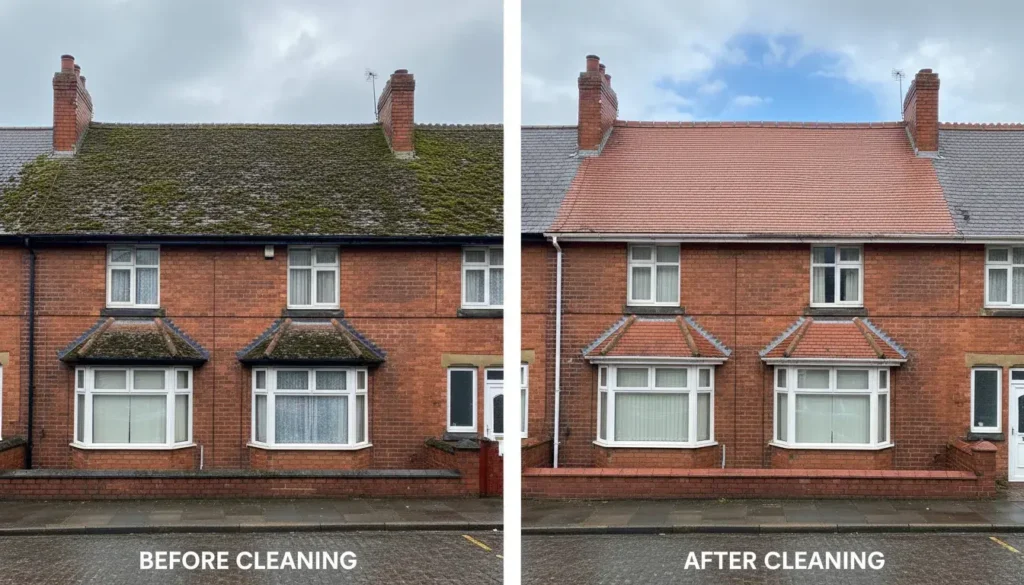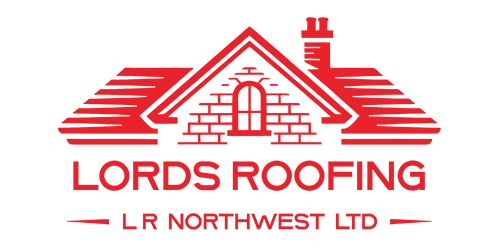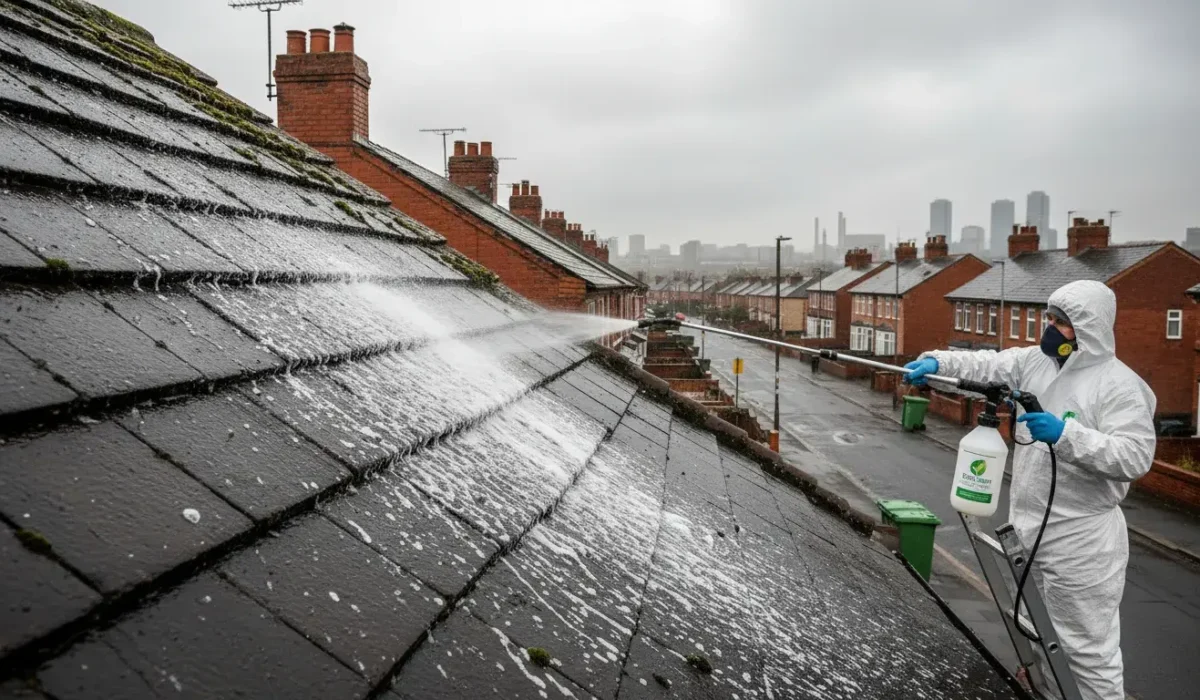The Dangers of High-Pressure Washing Your Roof: Why You Should Avoid DIY Jet Washing
That stubborn green moss and dark algae streaks on your roof may be an eyesore, but the quick-fix of high-pressure roof washing (often called jet washing or roof power washing) is an expensive gamble that can lead to severe and costly damage.
While it offers instant visual results, using brute force to clean your roof compromises the materials that protect your home. Here is a detailed look at why you should never use a pressure washer for washing a roof, and the safer, professional alternatives you should choose for effective roof cleaning and moss removal.
The Hidden Dangers of High-Pressure Washing
Roofing materials, whether they are traditional concrete tiles, clay tiles, or asphalt shingles, are designed to protect against weather—not a highly-pressurised stream of water. The aggressive force from a typical power washer is simply too much for these materials to bear, leading to both immediate and long-term structural failures.
1. Damage to Roof Tiles and Shingles
The high PSI (pounds per square inch) of a jet washer can directly fracture, crack, or loosen roof tiles and slates, especially if they are older or brittle.
-
Stripping Protective Coatings: Concrete and clay tiles often have a surface coating or colour finish applied during manufacturing to protect them from UV rays and moisture. High-pressure water instantly strips this layer away, exposing the porous material beneath.
-
Cracking and Breakage: Forcing water onto the tile surface can cause micro-fractures, which will expand and become visible cracks over time, particularly during freeze-thaw cycles in winter.
-
Mortar Damage: The high pressure can dislodge the mortar or cement used in key areas like ridge tiles and verges, weakening the structural joints of your roof.
2. Loss of Protective Granules on Asphalt Shingles
If your roof is covered with asphalt shingles, the use of a pressure washer is even more damaging.
-
Granule Loss: Asphalt shingles are coated with mineral granules that act as a primary layer of protection against the sun’s damaging UV rays and provide fire resistance. High-pressure water blasts these granules off the shingle surface.
-
Accelerated Aging: Once the granules are gone, the shingle’s asphalt layer is exposed to the elements, leading to rapid deterioration, brittleness, and a significantly shortened lifespan. This damage often appears as bare, bald patches on the roof.
3. Water Ingress and Leaks (Flooding Risk)
A roof is layered to shed water down and off the building. High-pressure washing works against this design principle.
-
Water Forced Under Tiles: When pointed upward or directed aggressively, the water jet forces its way underneath the overlapping tiles or shingles.
-
Internal Damage: This trapped moisture can soak into the underlying roofing felt, the timber battens, and even the roof deck, leading to dampness, mould, mildew growth, and eventually, expensive wood rot and internal ceiling damage.
4. Voided Manufacturer Warranties and Insurance Issues
Leading UK roof tile manufacturers, such as Marley, explicitly advise against the use of high-powered jet washing a roof, stating it reduces the expected life of the material.
-
Warranty Invalidation: Most roofing warranties explicitly state that high-pressure roof cleaning will void the guarantee. Any subsequent repairs will be your sole financial responsibility.
-
Denied Claims: Damage to your roof caused by high-pressure washing can be considered homeowner negligence, which may lead to your home insurance provider rejecting a claim for resulting leaks or water damage.
5. Accelerated Moss Regrowth
While a jet washer removes moss instantly, it actually creates a perfect environment for it to return faster and thicker.
-
Porous Surface: By stripping away the protective surface coatings, the tiles become rougher and more porous, meaning they hold moisture for longer.
-
Faster Regrowth Cycle: This moisture-rich, porous surface is the ideal habitat for moss and algae spores, accelerating the cycle of growth and necessitating more frequent, costly maintenance.
Safer, Professional Roof Cleaning Methods
The correct way to remove moss, algae, and lichen is with a gentle, professional approach that kills the organisms at their root while preserving the integrity of your roofing materials. The safest and most recommended method is Soft Roof Washing.

Don’t let the promise of a quick, cheap clean lead to thousands of pounds in roof repairs. For effective, long-lasting, and damage-free roof cleaning and moss removal, always opt for a reputable professional who uses a soft wash or gentle manual and chemical treatment process. Protect your investment—say no to roof power washing! Sources


